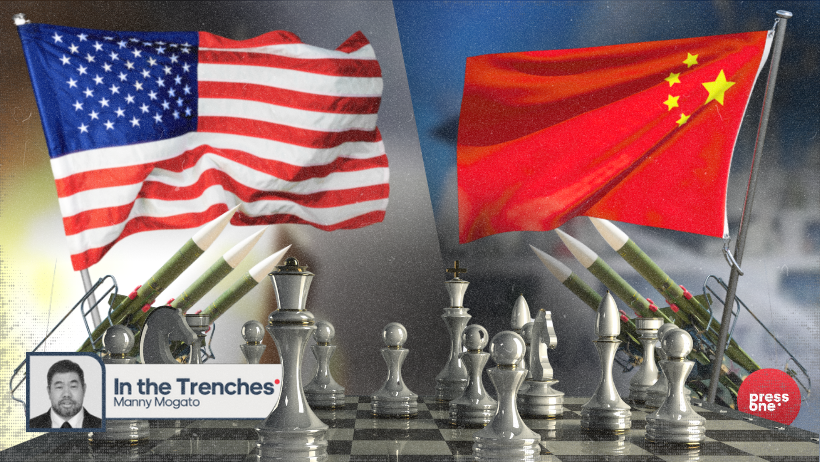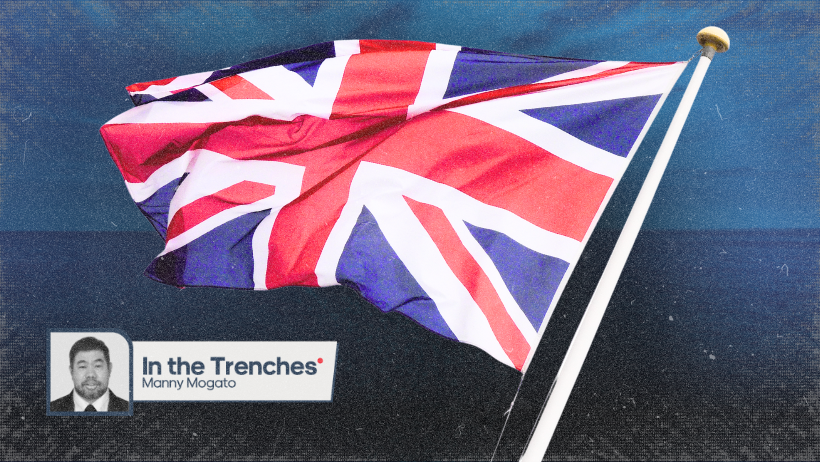#PHProtectProject

In one of its latest short-form videos, China Daily’s “Media Unlocked” channel left out key contexts and details as it defended Beijing’s stance on Scarborough Shoal.
Despite a lack of facts, the June 4 video was labeled as a “fact-check” on the keynote address delivered by President Ferdinand Marcos Jr. during the 21st Shangri-La Dialogue of the International Institute for Strategic Studies.
In the video, a China Daily reporter pulled out an old Philippine map that showed Scarborough Shoal, also known as Bajo de Masinloc, as outside Philippine territory based on the lines drawn by the Treaty of Paris when the Philippines was ceded to the United States by Spain in 1898.
“But look at this map of the Philippines, a map published by the Philippine authority. Huangyan Island is outside these borders,” claimed the reporter, using China’s preferred name for Scarborough Shoal.
“So it’s not part of the Philippines as per these treaties,” he added, without mentioning these treaties or going into detail, a strategy often used in Media Unlocked videos.
As a result, the Philippines, as represented by Marcos, was made to look as, at the very least, inconsistent in its pronouncements on the Scarborough issue.
Yet a closer reading of Marcos’s speech showed that this was not the case.
In his May 31 speech, Marcos stressed a policy of adherence to international laws as regards Philippine territory and maritime zones, in apparent contrast to China’s disregard of these laws.
The president mentioned as basis three treaties. First, the Treaty of Paris mentioned earlier in this article. Second, the Treaty of Washington (1900) that gave the US control over other islands of the Philippine archipelago outside the lines drawn by the Treaty of Paris.
The language of this second treaty grants the Philippines ownership of islands outside of those covered by the earlier treaty, including Scarborough, according to retired senior associate justice Antonio Carpio.
Third, the 1982 United Nations Convention on the Law of the Seas (Unclos), to which both Manila and Beijing are signatories.
The Unclos defined the 200-nautical-mile exclusive economic zone (EEZ) within which archipelagic nations like the Philippines enjoy sovereign rights over natural resources.
This EEZ was upheld in 2016 by an international arbitral tribunal that invalidated China’s claim to almost the entire South China Sea through its nine-dash-line map, which Beijing had boycotted and refuses to recognize.
Marcos highlighted this arbitration victory in his Singapore speech as being part of international law.
He also mentioned the Archipelagic Baselines Law, or Republic Act 9522 passed by the Philippine Congress in 2009, which the president co-sponsored when he was a senator. In the law, Scarborough and the Spratly Islands were defined as under a “regime of islands” based on Unclos.
“Accordingly, we have made a conscious effort to align our definition of our territory and our maritime zones with what international law permits and recognizes. This has been inscribed in Article 1 of our constitution,” Marcos said in his speech.
Speaking of old cartography, at least 60 maps disprove China’s claim not just to Scarborough but to the South China Sea, according to Carpio’s research.
The Murillo Velarde Map of 1734, engraved by a Jesuit priest at the request of the Spanish colonial government, in fact, incorporates Scarborough Shoal, then called “Panacot,” before Chinese maps ever did.
The latest administrative map of the Philippines, downloadable from the website of the National Mapping and Resource Information Authority (Namria), mentions “Bajo de Masinloc (Scarborough Shoal),” reflecting Manila’s stance.
This set of facts unfortunately couldn’t make it to Media Unlocked’s “fact-check.” Felipe F. Salvosa II

Explainer: Debunking Media Unlocked’s fact-challenged reporting on Scarborough
In one of its latest short-form videos, China Daily’s “Media Unlocked” channel left out key contexts and details as it defended Beijing’s stance on Scarborough Shoal.

Typhoon: Dark clouds hang over the region
Earlier this month, a spokesman for China’s defense ministry slammed its rival, the United States, for deploying its new “Typhoon” missile launcher system in the northern Philippines.

The United Kingdom’s strategic interest in the Indo-Pacific region
The British Royal Navy, in a significant strategic move, has announced plans to deploy one of its two aircraft carriers to the Indo-Pacific region next year.

0 Comments